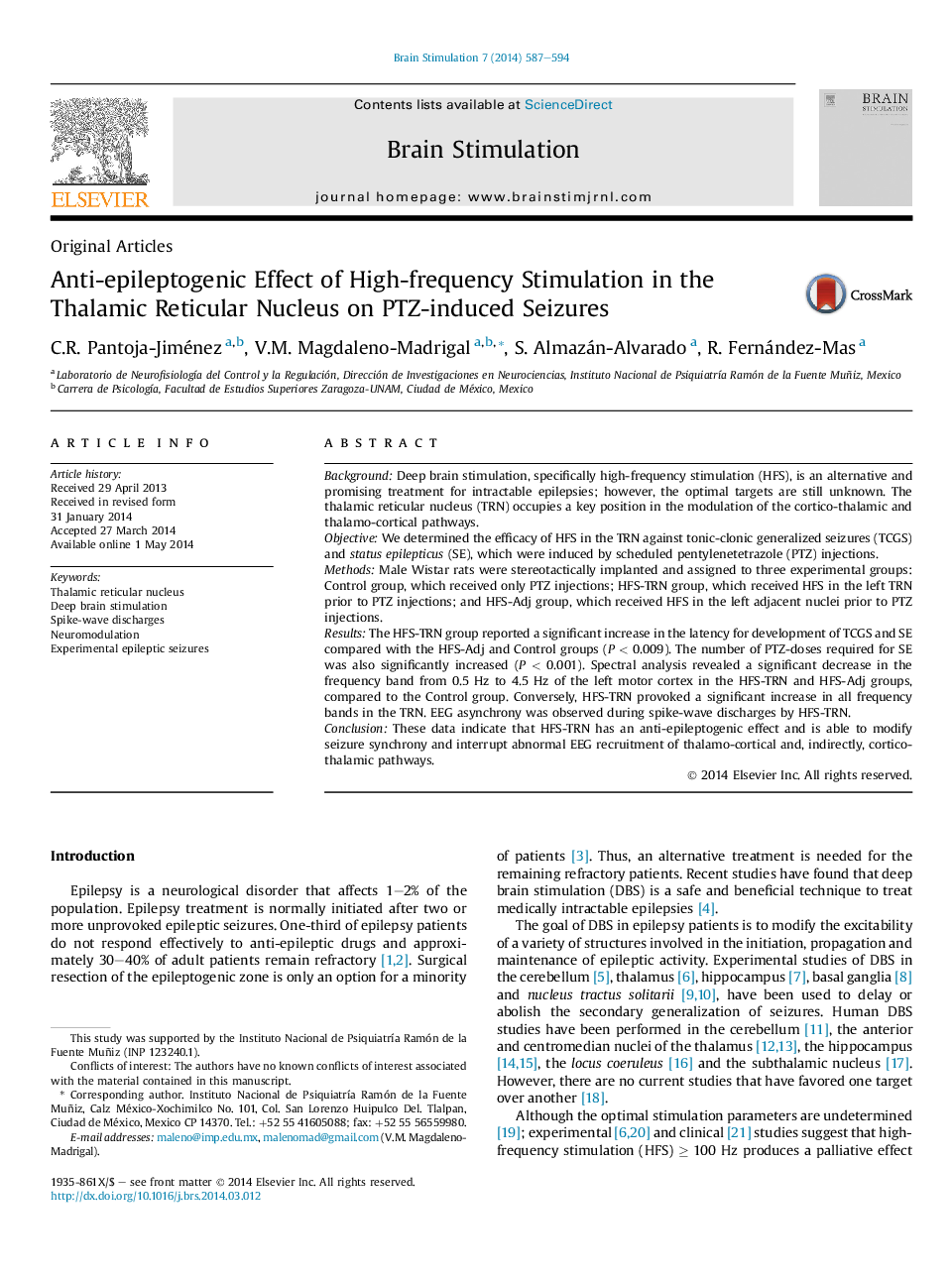| Article ID | Journal | Published Year | Pages | File Type |
|---|---|---|---|---|
| 6005558 | Brain Stimulation | 2014 | 8 Pages |
BackgroundDeep brain stimulation, specifically high-frequency stimulation (HFS), is an alternative and promising treatment for intractable epilepsies; however, the optimal targets are still unknown. The thalamic reticular nucleus (TRN) occupies a key position in the modulation of the cortico-thalamic and thalamo-cortical pathways.ObjectiveWe determined the efficacy of HFS in the TRN against tonic-clonic generalized seizures (TCGS) and status epilepticus (SE), which were induced by scheduled pentylenetetrazole (PTZ) injections.MethodsMale Wistar rats were stereotactically implanted and assigned to three experimental groups: Control group, which received only PTZ injections; HFS-TRN group, which received HFS in the left TRN prior to PTZ injections; and HFS-Adj group, which received HFS in the left adjacent nuclei prior to PTZ injections.ResultsThe HFS-TRN group reported a significant increase in the latency for development of TCGS and SE compared with the HFS-Adj and Control groups (PÂ <Â 0.009). The number of PTZ-doses required for SE was also significantly increased (PÂ <Â 0.001). Spectral analysis revealed a significant decrease in the frequency band from 0.5Â Hz to 4.5Â Hz of the left motor cortex in the HFS-TRN and HFS-Adj groups, compared to the Control group. Conversely, HFS-TRN provoked a significant increase in all frequency bands in the TRN. EEG asynchrony was observed during spike-wave discharges by HFS-TRN.ConclusionThese data indicate that HFS-TRN has an anti-epileptogenic effect and is able to modify seizure synchrony and interrupt abnormal EEG recruitment of thalamo-cortical and, indirectly, cortico-thalamic pathways.
